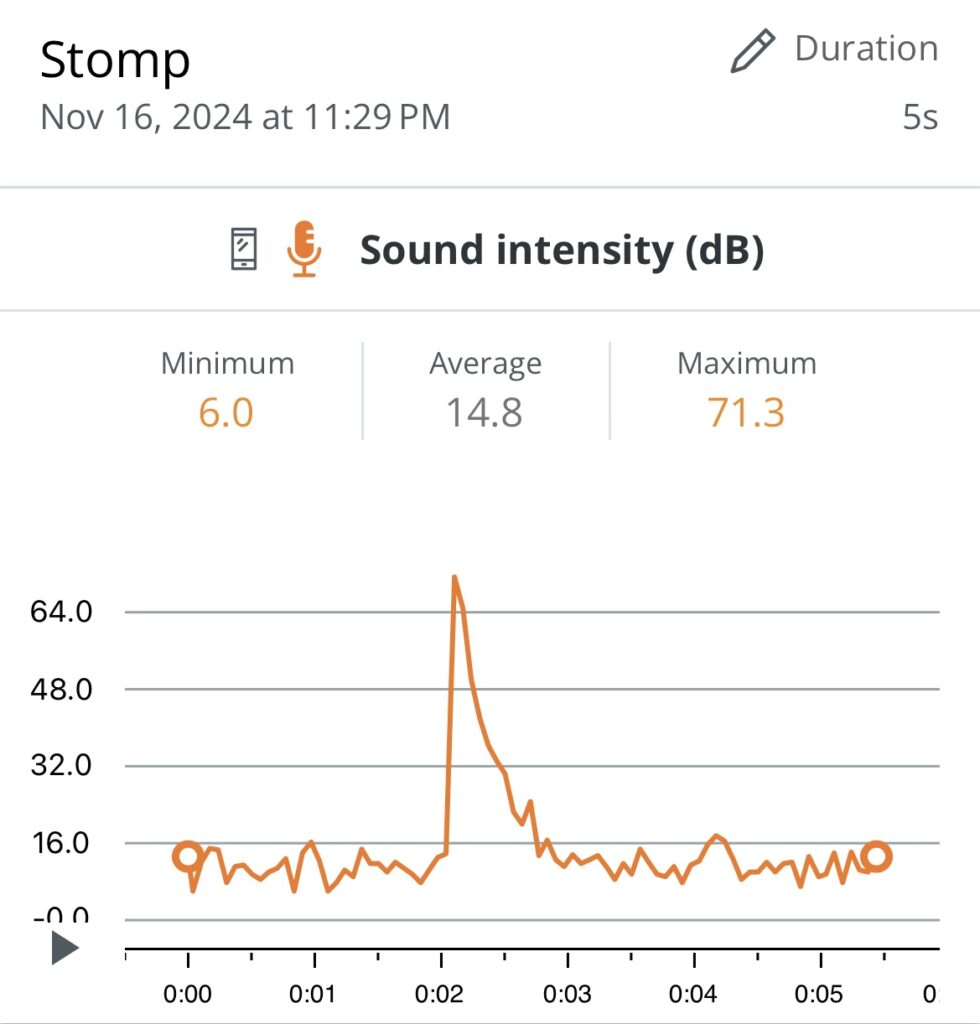This week, I got the opportunity to explore Arduino Science Journal. This is a super cool app that allows students to perform experiments from wherever they are, whenever they want! It also allows students to record any data they find, as well as provides many different useable sensors such as a barometer, a compass, a magnetometer, and more. For my experiment, I used the sensor that measures sound intensity, and I performed actions such as clapping, stomping, whistling and speaking, and recorded the difference in decibels.




As you can see, the actions that created the highest sound intensity were whistling and stomping. I believe that this is because these actions were performed closer to the microphone than clapping was. When I stomped my foot, it was right next to the phone’s speaker. When I whistled, I held the speaker close to my mouth. When I clapped, however, the phone was on the floor and I clapped above it. In order to perform this experiment with less variables, next time, I would place my phone on a table instead of the floor, and not hold it for some actions and not others.
Technology in the classroom is a widely debated and nuanced topic. Aside from purely academic uses, tablets can be a great tool for students with learning difficulties. One such resource is Proloquo. This is an app that is essentially a touch board of different words, phrases, feelings, actions, and more, that, when pressed, say the word aloud through the speaker. This is a great way for students with speech difficulties to communicate.

One risk with this technology is that it could create a reliance. Students become accustomed to using the app, and may be reluctant to try speaking without it, even if they are ready and able. I do, however, believe that the benefits outweigh the risks. Students will grow out of that reluctance; what is important is developing their self-confidence and independence, something that this app does well.